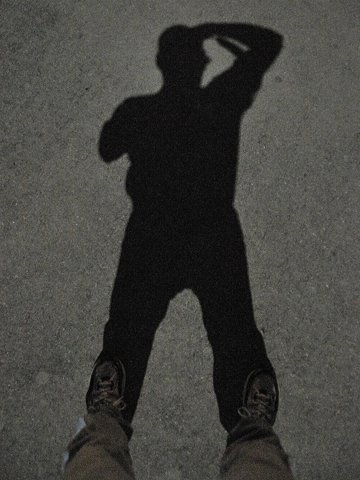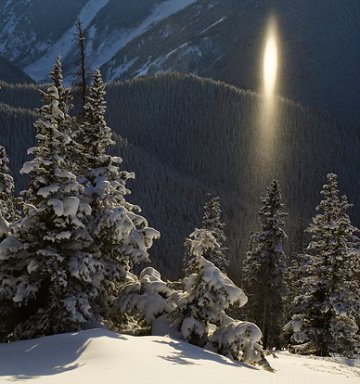| NEW-CYCLE SUNSPOT: It's not big, but it is significant. Emerging sunspot 1010 is a member of new Solar Cycle 24. This small but growing active region is the latest in a series of new-cycle spots that began popping up on the sun about four months ago. Solar activity is still low, but we appear to be leaving solar minimum behind and beginning the slow ascent to Solar Max in 2011-2013. PERIGEE MOON SHADOWS: The brightest full Moon of the year is casting the darkest Moon-shadows. "I went out tonight to take a picture of the moonrise," says Jonathan Sabin of Ellenton, Florida. "I couldn't help noticing just how dark the shadows were." He faced away from the light, directed his camera (a Nikon D300) at the ground, and snapped this self-portrait: 
This weekend's full Moon is a perigee Moon, as much as 50,000 km closer to Earth and 30% brighter than usual. All around the world, people were amazed by the shadows--but even more amazed by the light source itself. Browse the links below to see what was shining behind Sabin's back. more images: from Anton Balatskiy of Port Provideniya, Chukotka, Russia; from Doug Zubenel of Johnson County, Kansas; from David Ewoldt of Okarche, Oklahoma; from Terry Tedor of North Pole, Alaska; from Antoine Gerhardt of Nice, France; from Herfried Eisler of Strasbourg, France; from David Dickinson of Hudson, Florida; from Charles Beanland of Gibraltar, Europe; from Mariano Ribas of Buenos Aires, Argentina; from Keith Breazeal of Amador County, California; from Tamas Ladanyi of Kabhegy, Hungary; from Robbie Merrill of Mesa, Arizona; from Till Credner of Bad Urach, Germany; from Riccardo Di Nasso of Pisa, Italy; from Bryan Murahashi of San Jose, California; from Jim Saueressig of Burlington, Kansas; from Ginger Mayfield of Divide, Colorado; from K. Raghunathan of Chennai, India; from Bader Eddine Hamdi of Debila, Eloued, Algeria; from Vincent Jacques of Breil-sur-Roya, France; from Mahdi Zamani of Tehran, Iran; from Jens Hackmann of Weikersheim, Germany; from Frederic Hore of Montreal, Quebec; BONUS: Today's edition of Space Weather Radio highlights a pack of Siberian Huskies howling at the perigee Moon.. ALPINE SUBSUNS: The next time you go skiing, look out for bright lights floating in the air around you. Really. "I saw several of them while riding the lifts in Aspen on Jan. 3rd," reports photographer Thomas O'Brien. "I decided to hike around the mountain for a better view and I found a really bright one. It was incredibly hard to photograph--like shooting directly into two suns at once." This was the view through his Canon 5D: 
"It is exactly like shooting into two suns at once," says atmospheric optics expert Les Cowley, "because it is a subsun, a direct reflection of the sun by millions of ice crystals acting as mirrors. The crystals are flat plates drifting in the cold air. Subsuns can be blindingly bright, look for them while skiing or when flying." more images: from Thomas O'Brien in Aspen, Colorado; from Lukas Ronge on Snezka mountain in the Czech Republic
UPDATED: Jan. 2009 Aurora Gallery
[Previous Januaries: 2008, 2007, 2005, 2004, 2001] | 
